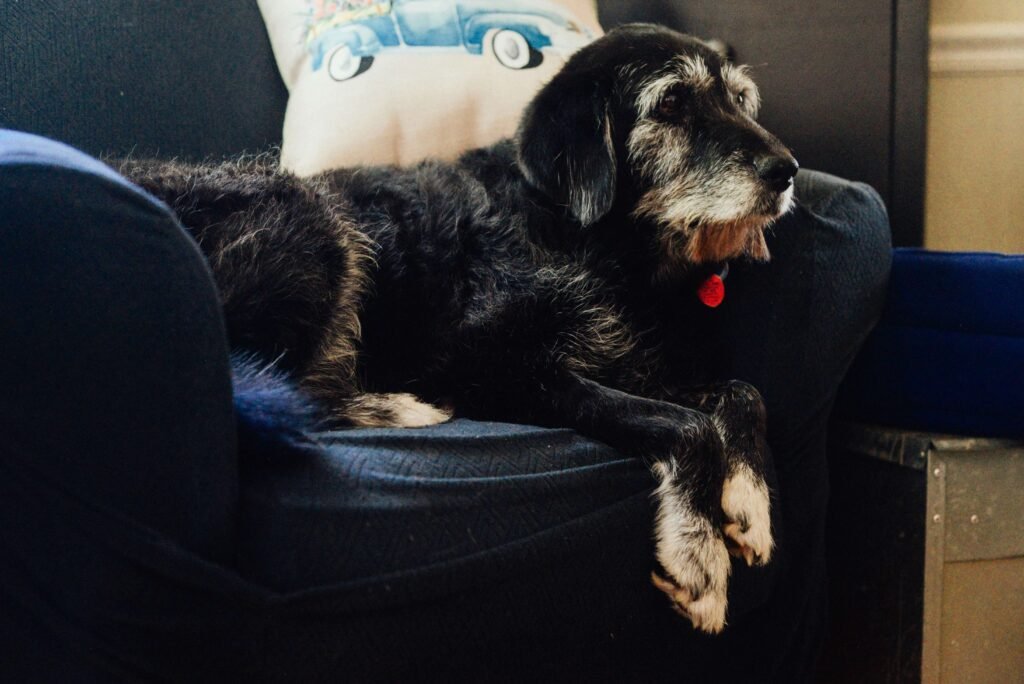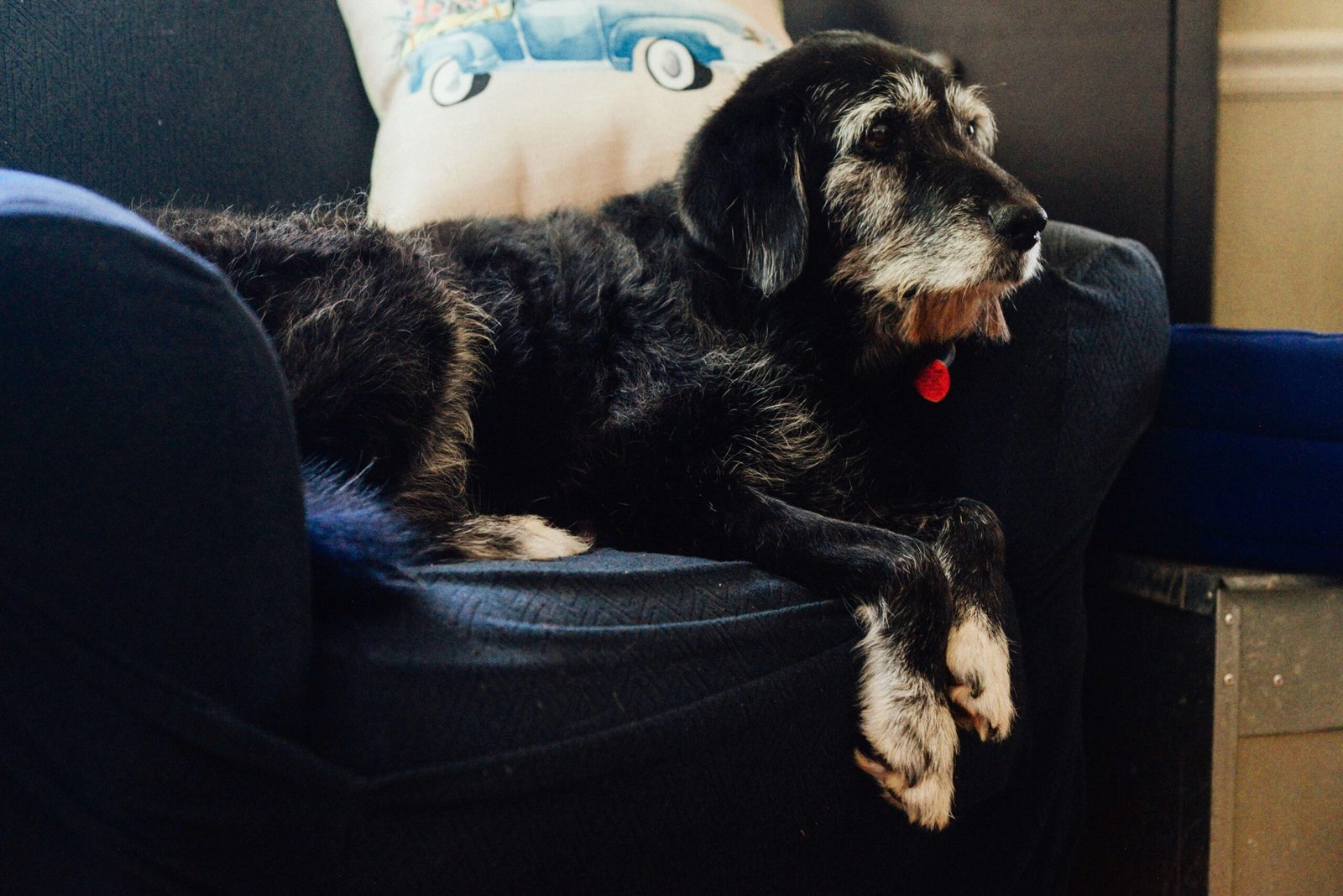Understanding Old Dog Losing Hair in Patches and Scabs
As dogs age, their bodies undergo changes that can sometimes manifest in visible ways, such as losing hair in patches or developing scabs. While some hair loss and skin issues are normal due to aging, persistent or severe symptoms may indicate an underlying health problem. It’s important to pay attention to these signs, as they could point to allergies, infections, hormonal imbalances, or other conditions. In this blog post, we’ll explore the potential causes of hair loss and scabs in older dogs, how to address them, and tips for keeping your senior dog comfortable and healthy.
Common Causes of Hair Loss and Scabs in Older Dogs
Hair loss and scabs in senior dogs can stem from a variety of factors. Here are some of the most common causes:
Allergies : Environmental, food, or flea allergies can cause itching, leading to hair loss and scabbing.
Parasites : Fleas, ticks, or mites (such as those causing mange) can irritate the skin and result in patchy hair loss.
Hormonal Imbalances : Conditions like hypothyroidism or Cushing’s disease can disrupt the coat and skin health.
Infections : Bacterial or fungal infections, such as ringworm, can lead to scabs and bald spots.
Pressure Sores : Older dogs with limited mobility may develop sores from lying in one position for too long.
Identifying the root cause is essential for determining the appropriate treatment and ensuring your dog’s comfort.
Symptoms to Watch For
Hair loss and scabs are often accompanied by other signs that can help pinpoint the issue. Here’s what to look out for:
Itching and Scratching : Excessive licking, biting, or scratching indicates irritation or discomfort.
Redness or Inflammation : Skin that appears red, swollen, or irritated may signal an infection or allergy.
Odor : A foul smell from the affected area could suggest a bacterial or yeast infection.
Behavioral Changes : Restlessness, lethargy, or irritability may accompany physical symptoms.
Thinning Coat : Gradual thinning of the fur, especially around the ears, belly, or legs, can indicate systemic issues.
Recognizing these symptoms early allows you to address the problem before it worsens and impacts your dog’s quality of life.
Check this guide 👉Understanding Dog Scab: Best 7 Expert Tips!
Check this guide 👉How to Deshed a Dog: Best 7 Expert Tips!

Potential Causes of Hair Loss | Treatment Options |
|---|---|
Allergies (food, environmental, fleas) | Antihistamines, hypoallergenic diet |
Parasitic Infestations (fleas, mites) | Flea treatments, medicated shampoos |
Hormonal Imbalances (thyroid, Cushing’s) | Hormone therapy, supplements |
Bacterial or Fungal Infections | Antibiotics, antifungal medications |
Pressure Sores | Soft bedding, improved mobility exercises |
How to Care for Your Senior Dog’s Skin and Coat
Taking proactive steps to care for your dog’s skin and coat can prevent or alleviate issues like hair loss and scabs. Here are some practical tips:
Regular Grooming : Brush your dog’s coat frequently to remove loose hair and distribute natural oils.
Balanced Diet : Feed your dog a nutrient-rich diet with omega-3 fatty acids to support skin and coat health.
Flea Prevention : Use vet-recommended flea and tick prevention products to avoid infestations.
Moisturizing Baths : Bathe your dog with a gentle, moisturizing shampoo to soothe dry or irritated skin.
Monitor Mobility : Ensure your dog has soft bedding and encourage movement to prevent pressure sores.
By incorporating these practices into your routine, you can help maintain your senior dog’s skin and coat health and reduce the risk of problems.
Natural Remedies for Skin and Coat Health
If you prefer natural solutions, there are several remedies that can help soothe your dog’s skin and promote healing. Here are some options to consider:
Coconut Oil : Apply topically or mix into food to moisturize the skin and reduce inflammation.
Aloe Vera : Use pure aloe vera gel to calm irritated skin and promote healing.
Oatmeal Baths : Create a soothing bath with colloidal oatmeal to relieve itching and dryness.
Fish Oil Supplements : Rich in omega-3s, fish oil supports skin health and reduces flakiness.
Apple Cider Vinegar : Dilute with water and apply to the skin to combat bacteria and fungi.
While these remedies can be effective, always consult your vet before trying new treatments, especially for older dogs with sensitive systems.
Preventive Measures to Protect Your Dog’s Skin
Preventing skin issues in older dogs is key to avoiding problems like hair loss and scabs. Here are some proactive steps you can take:
Regular Vet Checkups : Schedule routine visits to catch potential skin issues early before they escalate.
Maintain a Clean Environment : Keep your dog’s bedding, toys, and living space clean to reduce exposure to allergens and irritants.
Avoid Harsh Chemicals : Use pet-safe cleaning products to prevent skin irritation from harsh chemicals.
Monitor Diet Quality : Ensure your dog’s food is free of artificial additives that could trigger allergic reactions.
Limit Sun Exposure : Protect your dog’s skin from excessive sun exposure, especially if they have thin or light-colored fur.
By taking these preventive measures, you can significantly reduce the risk of skin problems and keep your senior dog comfortable and healthy.
Signs That Your Dog Needs Immediate Veterinary Attention
While some skin issues can be managed at home, others require prompt veterinary care. Here are signs that indicate your dog needs immediate attention:
Severe Itching or Scratching : Persistent scratching that causes open wounds or bleeding requires urgent treatment.
Swelling or Pus : Swollen areas or discharge from sores may indicate a serious infection.
Lethargy or Loss of Appetite : These symptoms, combined with skin issues, could signal a systemic problem.
Sudden Hair Loss : Rapid or widespread hair loss should be evaluated to rule out underlying conditions.
Behavioral Changes : Unusual aggression, withdrawal, or restlessness may indicate significant discomfort.
Recognizing these warning signs ensures your dog receives timely care and prevents complications from worsening.
How to Make Your Senior Dog More Comfortable at Home
Creating a comfortable environment can help your senior dog cope with skin issues and other age-related challenges. Here are some ways to improve their quality of life:
Provide Orthopedic Bedding : Soft, supportive beds reduce pressure on joints and prevent sores.
Adjust Temperature : Keep your home warm in winter and cool in summer to prevent dry or overheated skin.
Use Humidifiers : Add moisture to the air during dry seasons to prevent skin from becoming flaky or irritated.
Offer Gentle Exercise : Short, low-impact activities like walking or swimming keep your dog active without straining their body.
Minimize Stress : Create a calm environment by sticking to routines and providing plenty of affection.
By making these adjustments, you can help your senior dog feel more relaxed and supported, even as they navigate age-related challenges.
Frequently Asked Questions About Old Dog Hair Loss and Scabs
Is hair loss normal in older dogs?
Some thinning is normal, but excessive or patchy hair loss should be evaluated by a vet.
Can stress cause hair loss in dogs?
Yes, stress or anxiety can lead to over-grooming and subsequent hair loss.
How can I tell if my dog has mange?
Look for intense itching, redness, and hair loss, particularly around the ears and face.
Are certain breeds more prone to skin issues?
Yes, breeds like Bulldogs, Retrievers, and Terriers are more susceptible to allergies and skin problems.
When should I see a vet?
If the hair loss or scabs persist, worsen, or are accompanied by other symptoms like lethargy or appetite loss, seek veterinary care immediately.
Supporting Your Senior Dog Through Aging
Hair loss and scabs in older dogs can be distressing, but with proper care and attention, many of these issues are manageable. By understanding the potential causes, monitoring your dog’s symptoms, and seeking professional guidance when needed, you can ensure your furry friend remains comfortable and happy in their golden years. Remember, your senior dog relies on you to advocate for their health—so stay vigilant, provide plenty of love and support, and celebrate the joy they bring to your life every day. With the right approach, you can help your companion enjoy a fulfilling and comfortable life, even as they age.
Understanding Carcinoma in Cats: Best 7 Expert Tips! – Spot early signs, explore treatment options, and support your cat with expert-backed care.
Understanding Carcinoma in Dogs: Best 7 Expert Tips! – Spot early signs, explore treatment options, and support your dog through diagnosis and care.
Cat Scratching Until Bleeding: Best 7 Expert Tips! – Discover causes, safe treatments & how to stop self-injury in cats.
Understanding Cat Coat Types: Best 7 Expert Tips! – Discover grooming, health & care tips for every feline fur type.





